Home>diy>Building & Construction>What Is A Structure In Construction
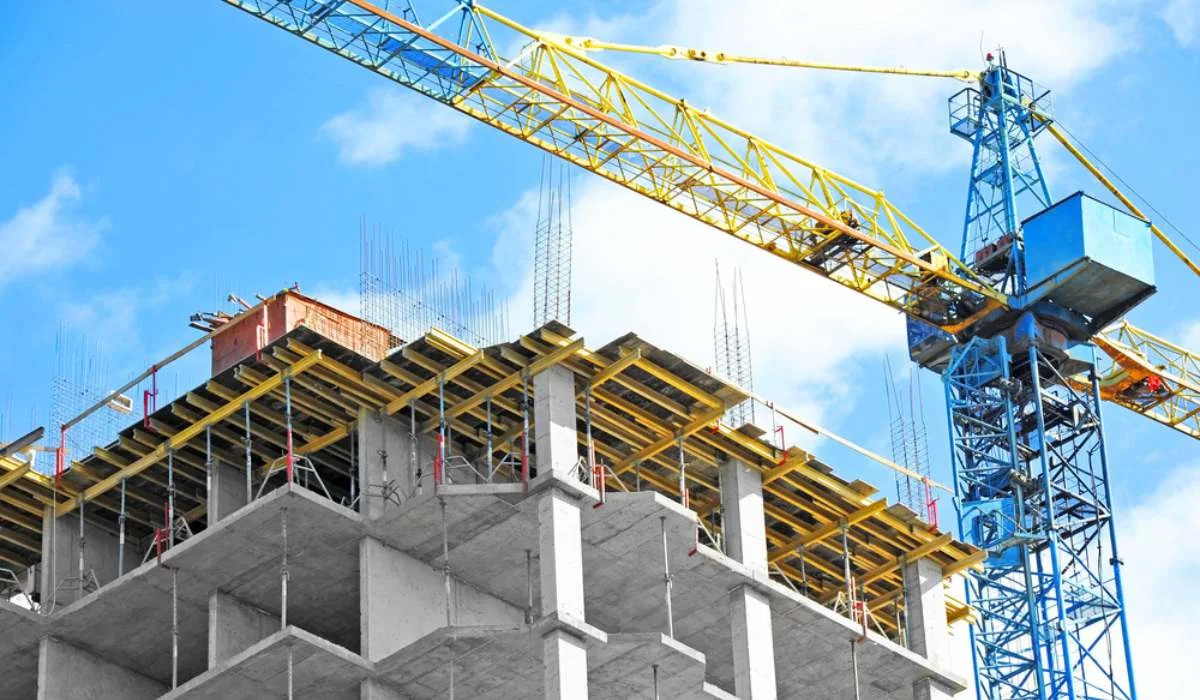

Building & Construction
What Is A Structure In Construction
Modified: October 29, 2024
Discover the importance of structures in building construction, including their role in providing stability and support. Learn about different types of structures and how they are designed and implemented.
(Many of the links in this article redirect to a specific reviewed product. Your purchase of these products through affiliate links helps to generate commission for Storables.com, at no extra cost. Learn more)
Introduction
Welcome to the world of construction, where structures come to life and shape our cities and communities. When we talk about construction, the term “structure” holds paramount importance. It is the backbone of any building or infrastructure project, ensuring stability, durability, and safety. In this article, we will explore the concept of structures in construction and delve into its significance, types, components, materials, design considerations, analysis, engineering, construction methods, and common challenges.
Structures in construction refer to the framework or system of elements that provide support, stability, and strength to a building or any other construction project. They are designed to withstand various forces such as gravity, wind, seismic activity, and loads imposed by human activities.
The importance of structures in construction cannot be overstated. A well-designed and robust structure ensures the safety and integrity of the building, protecting its occupants and the investments made. Without a solid structure, a building would be vulnerable to collapse, compromising the safety of everyone within it.
There are several types of structures in construction, each serving a specific purpose and accommodating different architectural designs and functional requirements. Some common types include residential structures, commercial structures, industrial structures, bridges, towers, and infrastructure projects such as roads and tunnels.
A structure in construction comprises various components that work together synergistically to provide strength and stability. These components include foundations, columns, beams, slabs, walls, roofs, and other load-bearing elements. Each component plays a vital role in distributing the loads and stresses evenly, ensuring the overall structural integrity.
Structural materials used in construction play a crucial role in determining the strength and durability of the structure. Common materials include concrete, steel, wood, masonry, and composite materials. The choice of materials depends on factors such as the type of structure, design requirements, environmental conditions, and budget.
Key Takeaways:
- Structures in construction are the backbone of stability, durability, and safety for buildings and infrastructure projects, ensuring the safety of occupants and the integrity of the construction project.
- Successful structural construction projects require thorough planning, effective design, precise execution, and astute problem-solving to create visually appealing, safe, durable, and sustainable structures.
Definition of Structure in Construction
In the realm of construction, a structure refers to the arrangement and organization of components that create a stable and functional entity. It encompasses the framework, system, or skeletal support that provides the building with strength, stability, and durability. A structure in construction is designed to withstand the applied loads and forces, ensuring the safety and longevity of the construction project.
Structures in construction can take various forms and serve different purposes, ranging from buildings and bridges to tunnels and dams. Regardless of its specific application, a structure is characterized by its ability to support its own weight, resist external forces such as wind and earthquakes, and efficiently distribute loads to the foundation.
A well-designed structure in construction must adhere to various principles and regulations that govern structural engineering and ensure its safety and performance. These principles consider factors such as the applied loads, material properties, environmental conditions, and the anticipated lifespan of the structure.
Structures in construction often involve a combination of elements, including beams, columns, walls, roofs, slabs, and foundations. These components work together to create a solid and stable structure, capable of maintaining its shape and integrity over time. The arrangement and connection of these elements are carefully planned to achieve the desired structural behavior and performance.
Structural integrity is a crucial aspect of a construction project. It refers to the ability of a structure to withstand the imposed loads and forces without undergoing excessive deformation or failure. A structurally sound construction ensures the safety of occupants and minimizes the risk of structural collapse or damage.
The design and construction of a structure involve a comprehensive analysis of the forces acting upon it, including gravity, wind, seismic activity, and imposed loads. This analysis allows engineers to determine the required dimensions, materials, and reinforcement needed for the structure to meet the safety and performance standards.
In summary, a structure in construction encompasses the arrangement and organization of components that provide strength, stability, and durability to a construction project. It encompasses the framework and support system that allows buildings, bridges, and other structures to withstand external forces and ensure the safety of occupants and investments.
Importance of Structure in Construction
The importance of a well-designed and robust structure in construction cannot be overstated. It serves as the backbone of any building or infrastructure project, playing a critical role in ensuring stability, durability, and safety. Let’s explore some key reasons why the structure is of utmost importance in construction.
1. Safety: The primary purpose of a structure in construction is to provide a safe environment for occupants. A well-designed and properly constructed structure can withstand various forces, such as gravity, wind, seismic activity, and imposed loads. It prevents the occurrence of structural failures, collapses, or other hazards that could endanger human lives.
2. Durability: The structure is responsible for the longevity and durability of a construction project. A robust and well-maintained structure can withstand the test of time and endure the impacts of aging, weather conditions, and other environmental factors. It minimizes the need for frequent repairs and replacements, saving time and costs in the long run.
3. Functionality: A well-designed structure ensures that the construction project serves its intended purpose effectively. It provides the necessary support and layout to accommodate the desired functionalities. Whether it’s a residential, commercial, or industrial structure, the design and arrangement of the structure contribute to the optimal utilization of space.
4. Cost-Effectiveness: Investing in a well-designed structure from the beginning can result in long-term cost savings. By considering factors such as load distribution, material quality, and environmental conditions during the design and construction phase, the structure can be optimized to minimize future maintenance and repair expenses.
5. Architectural Freedom: The structure plays a crucial role in enabling architectural creativity and innovation. It provides the necessary support for unique and complex architectural designs, allowing architects to push the boundaries of construction and create iconic structures that stand out aesthetically.
6. Resilience: In areas prone to natural disasters such as earthquakes, hurricanes, or floods, a well-designed structure can provide resilience and withstand the severe forces imposed during such events. Proper structural engineering and construction techniques can enhance a building’s ability to resist and recover from natural disasters.
7. Compliance with Building Codes: Structures in construction must adhere to building codes and regulations set by local authorities. These codes ensure that the structure meets the minimum safety standards and withstands the anticipated loads and forces. Compliance with building codes is essential to obtain necessary permits and approvals for construction projects.
Overall, the structure forms the backbone of any construction project, ensuring safety, durability, functionality, and cost-effectiveness. It is crucial to engage skilled architects and structural engineers who can design and construct a robust structure that meets the specific requirements of the project and adheres to the relevant regulations.
Types of Structures in Construction
In the world of construction, there are various types of structures, each serving a specific purpose and accommodating different architectural designs and functional requirements. Let’s explore some common types of structures in construction:
- Residential Structures: These structures include houses, apartments, and condominiums. They are designed to provide living spaces for individuals and families. Residential structures can vary in size, style, and layout, catering to different housing needs and preferences.
- Commercial Structures: Commercial structures are built for business purposes, such as offices, retail stores, restaurants, and hotels. These structures are designed to accommodate commercial activities, with proper consideration given to space utilization, accessibility, and functionality for employees and customers.
- Industrial Structures: Industrial structures are constructed for manufacturing, processing, or storage purposes. They include factories, warehouses, power plants, and distribution centers. Industrial structures often require specialized design considerations to accommodate machinery, heavy equipment, and the specific needs of the industry.
- Bridges: Bridges are structures designed to span physical obstacles, such as rivers, valleys, and roads, to connect two points. They can vary in size, design, and construction methods, ranging from simple beam bridges to complex cable-stayed or suspension bridges.
- Towers: Towers are tall structures that typically serve communication or observation purposes. They can be standalone structures or part of a larger complex. Towers are designed to withstand high winds and other environmental factors and may house equipment such as antennas, observation decks, or elevators.
- Infrastructure Projects: These structures refer to essential public works projects such as roads, highways, bridges, tunnels, airports, and dams. Infrastructure projects are designed to provide transportation, utilities, and other essential services to communities and require meticulous planning, engineering, and construction.
- Specialized Structures: In addition to the common types mentioned above, there are specialized structures designed for unique purposes. These can include sports arenas, concert halls, museums, religious buildings, educational institutions, and healthcare facilities. Specialized structures often have specific design considerations to meet the functional and aesthetic requirements of their intended use.
It’s important to note that these types of structures often overlap, and many projects may fall into multiple categories. The choice of structure depends on the project’s purpose, budget, location, and other specific requirements. Each type of structure requires careful planning, design, and construction techniques to ensure functionality, safety, and longevity.
Components of a Structure in Construction
A structure in construction is composed of various components that work together to provide strength, stability, and support. These components are carefully designed and arranged to ensure the integrity and functionality of the structure. Let’s explore the key components of a structure:
- Foundation: The foundation is the lowest part of a structure that transfers the weight of the entire construction to the underlying soil or rock. It provides stability and prevents settlement. Foundations can be shallow, such as spread footings or rafts, or deep, like piles or caissons, depending on soil conditions and the load-bearing requirements.
- Columns: Columns are vertical load-bearing elements that transfer the loads from above to the foundation. They provide support and help distribute the forces evenly throughout the structure. Columns can be made of materials such as concrete, steel, or wood, depending on the design requirements.
- Beams: Beams are horizontal structural members that provide support and distribute the loads from the above structure to the columns or walls. They are designed to resist bending and carry the weight of the structure. Beams can be made of various materials, including reinforced concrete, steel, or composite materials.
- Slabs: Slabs are flat, horizontal elements that act as floors, ceilings, or roofs in a structure. They provide a solid surface for occupant use and contribute to the overall stability of the building. Slabs can be made of materials like concrete, precast concrete, or structural steel, depending on the specific requirements.
- Walls: Walls are vertical structural elements that provide enclosure, support, and separation within a structure. They can be load-bearing walls, which carry the weight of the structure above them, or non-load-bearing walls, which serve as partitions and provide internal division. Walls can be made of various materials, including masonry, concrete, or wood.
- Roofs: The roof is the topmost covering of a structure, providing protection from weather conditions and completing the enclosure. Roofs can be flat, pitched, or curved, depending on the architectural design and functional requirements. Roofing materials can include concrete, metal, clay tiles, or asphalt shingles.
- Stairs and Elevators: In multi-level structures, stairs and elevators are vital components for vertical circulation. They provide safe and convenient access to different levels of the building. Stairs can be made of various materials, including concrete, metal, or wood, while elevators incorporate mechanical systems for vertical transportation.
- Foundations and Footings: Foundations and footings are essential components that provide stability to the structure. They distribute the loads of the building and its occupants to the underlying soil or rock, ensuring the structure’s stability and preventing settlement. Foundations and footings are designed based on the soil conditions and the weight of the structure.
These are just some of the key components of a structure in construction. The design and arrangement of these components depend on various factors, including the building’s purpose, architectural design, environmental conditions, and load requirements. Proper consideration and integration of these components are crucial for ensuring the structural integrity, stability, and longevity of the construction project.
Structural Materials Used in Construction
Structural materials play a critical role in the construction industry as they determine the strength, durability, and overall performance of a structure. Various materials are used in the construction of buildings and infrastructure projects. Let’s explore some commonly used structural materials:
- Concrete: Concrete is one of the most widely used materials in construction. It is composed of cement, aggregates (such as sand, gravel, or crushed stone), water, and often includes additives. Concrete has excellent compressive strength and is capable of withstanding heavy loads. It can be poured into various forms and shapes, allowing for versatility in construction.
- Steel: Steel is a popular structural material known for its high strength-to-weight ratio. It is often used in the construction of beams, columns, and reinforcement in concrete structures. Steel offers excellent tensile strength and can resist forces such as wind and earthquakes. It is durable and can be fabricated and manipulated into different shapes and sizes.
- Wood: Wood has been used as a structural material for centuries. It is widely used in residential construction and low-rise buildings. Wood offers good strength, is renewable, and provides excellent thermal insulation properties. Various types of wood, such as lumber, plywood, and engineered wood products, are used depending on the specific requirements of the construction project.
- Masonry: Masonry is a construction technique that involves using individual units such as bricks, concrete blocks, or stone, bound together with mortar. Masonry structures offer strength, durability, and fire resistance. They are commonly used in walls, facades, and other load-bearing elements.
- Composite Materials: Composite materials are engineered materials that combine two or more constituents to create a material with enhanced properties. Fiber-reinforced polymers (FRP) are commonly used in construction, consisting of fibers embedded in a polymer matrix. These materials offer high strength, corrosion resistance, and flexibility in design.
- Glass: Glass is extensively used in modern construction for its aesthetic appeal and transparency. It can be utilized as a structural material in the form of glass facades, walls, or beams in combination with other materials like steel. Advances in glass technology have led to the development of laminated and reinforced glass, enhancing its strength and safety.
- Composite Material: These are a combination of two or more materials with different properties, resulting in a material with superior characteristics. For example, fiber-reinforced polymers (FRP) are used in construction due to their high strength, corrosion resistance, and lightweight properties.
The choice of structural material depends on several factors, including design requirements, load-bearing capabilities, environmental conditions, and budget constraints. Many structures employ a combination of these materials to optimize performance and meet specific project goals.
It’s important to note that the use of sustainable and environmentally friendly materials is gaining prominence in the construction industry. Materials such as recycled steel, bamboo, and engineered wood products from sustainable sources are increasingly being utilized to reduce the environmental impact of construction.
Overall, the selection of the appropriate structural material is crucial in ensuring the strength, durability, and sustainability of a construction project. Engineers and designers must consider the specific requirements of the structure to choose the most suitable material that will meet the project’s objectives and adhere to relevant codes and regulations.
When designing a structure in construction, consider the load-bearing capacity of the materials used and ensure proper reinforcement to support the intended use and potential environmental factors.
Design Considerations for Structures in Construction
Designing a structure in construction involves a meticulous process that considers various factors to ensure its functionality, safety, and longevity. Structural engineers and designers must take into account several design considerations throughout the planning and design stages. Let’s explore some key design considerations for structures in construction:
- Structural Loads: The design of a structure must consider the anticipated loads that will act upon it, including dead loads (self-weight of the structure), live loads (imposed by occupants or contents), wind loads, seismic loads, and snow loads (in cold climate regions). These loads dictate the dimensions, material strengths, and overall structural integrity required to safely withstand the forces.
- Building Codes and Regulations: Compliance with building codes and regulations is vital to ensure that a structure meets the minimum safety standards. Local authorities establish codes that specify design loads, material strengths, construction practices, fire safety measures, and other requirements. Adhering to these codes is necessary to obtain necessary permits and approvals for the construction project.
- Aesthetics: The design of a structure should also consider the desired aesthetic appeal and architectural style. It should integrate with the surrounding environment and contribute to the overall visual harmony. Balancing aesthetics with structural integrity is essential for creating impressive and functional structures.
- Functionality and Space Utilization: The design of a structure should optimize space utilization to meet the functional requirements of the project. The layout, placement of walls, partitions, and structural elements impact how space is used and how efficiently it accommodates the intended activities. Efficient space planning ensures practicality and enhances the user experience.
- Material Selection: The choice of materials is crucial in the structural design. It should align with the project’s requirements, considering factors such as load-bearing capacity, durability, aesthetics, and sustainability. Factors such as cost, availability, and environmental impact should also be taken into account when selecting materials.
- Life Safety: Design considerations should prioritize the safety and welfare of the occupants. This includes incorporating safe access and egress routes, properly designing fire-rated assemblies, and implementing building systems such as fire alarms and suppression systems. Structural design must also account for emergency evacuation and rescue scenarios in the event of unforeseen circumstances.
- Sustainability: In today’s construction industry, sustainable design is gaining prominence. Designers should consider environmental factors, energy efficiency, and the use of eco-friendly materials. Strategies such as passive design, green roofs, rainwater harvesting, and renewable energy integration can be incorporated to reduce the environmental impact of the structure.
- Structural Analysis and Simulation: Structural engineers use advanced software tools to carry out structural analysis and simulations. These tools help evaluate the behavior of the structure under different loads, assess stress distribution, and identify potential weaknesses. The analysis aids in optimizing the design for better performance and safety.
Design considerations for structures in construction require a comprehensive understanding of the project’s objectives, site conditions, budget constraints, and compliance with relevant codes. It is a collaborative process involving architects, engineers, and other stakeholders to create structures that are safe, functional, visually appealing, and sustainable.
Structural Analysis and Engineering in Construction
Structural analysis and engineering play a crucial role in the construction industry, ensuring the safety, stability, and performance of structures. Structural engineers utilize advanced techniques and principles to analyze and design structures, taking into account various forces and loads. Let’s explore the significance and process of structural analysis and engineering in construction:
Importance of Structural Analysis:
Structural analysis is essential to evaluate the behavior of a structure under different loads and forces, such as gravity, wind, seismic activity, and imposed loads. The analysis helps determine the structural integrity, stability, and performance of the construction project. It allows engineers to identify potential weaknesses, assess stress distribution, and ensure the structure’s ability to withstand the imposed loads without excessive deformation or failure.
Structural Engineering Process:
The structural engineering process involves several key steps:
- Analysis of Loads and Forces: Structural engineers assess the various loads and forces that will act upon the structure, including dead loads (self-weight of the structure), live loads, wind loads, seismic loads, and snow loads. They calculate and analyze the magnitude, direction, and distribution of these forces to determine the design requirements for the structure.
- Selection of Structural System: Based on the analysis of loads and project requirements, structural engineers select the appropriate structural system for the building or infrastructure. This includes determining the type and arrangement of columns, beams, slabs, walls, and foundations that will provide sufficient support and stability.
- Material Selection: Structural engineers consider the characteristics and properties of different materials to select the most suitable ones for the project. The material selection may vary based on factors such as strength, durability, environmental conditions, cost, and design criteria.
- Structural Modeling and Simulations: Engineers use computer-aided design software to create a detailed structural model of the project. This model aids in analyzing and simulating the behavior of the structure under different loads and forces. Sophisticated software tools generate visual representations of stress distribution, deflection, and deformation, assisting in optimizing the design for performance and safety.
- Structural Design and Detailing: Once the analysis and simulations are complete, structural engineers move on to the design phase. They develop detailed drawings and specifications that provide the necessary instructions for construction. The design includes the dimensions, reinforcement details, connections, and other technical information required for the construction of the structure.
- Construction Support: Structural engineers play a vital role during the construction phase, providing support to contractors and ensuring compliance with the design and engineering specifications. They may perform site visits, conduct inspections, review construction progress, and address any technical concerns or modifications required for the successful implementation of the design.
Advanced Techniques in Structural Analysis:
With advancements in technology, structural analysis has evolved significantly. Engineers now have access to advanced techniques such as finite element analysis (FEA) and computational fluid dynamics (CFD) to simulate complex structural behavior and assess the impact of environmental factors. These tools allow for more accurate and detailed analysis, resulting in improved designs and enhanced structural performance.
Overall, structural analysis and engineering are essential components of the construction process. They ensure the safety, stability, and performance of structures, enabling the construction of buildings and infrastructure that can withstand various loads and forces. Through meticulous analysis, design, and implementation, structural engineers contribute to the development of structures that are safe, functional, and capable of withstanding the test of time.
Construction Methods for Structures
Constructing a structure involves a series of carefully planned and executed methods to ensure its successful completion. Construction methods encompass the techniques and processes used to assemble and erect the various components of a structure. Let’s explore some common construction methods employed in the building industry:
- Traditional Construction: Traditional construction methods involve the sequential assembly of structural components on-site. This method typically utilizes materials such as concrete, steel, wood, or masonry. Construction crews follow architectural and engineering drawings to build the structure from the foundation to the roof, incorporating different trades such as masons, carpenters, welders, and electricians.
- Modular Construction: Modular construction involves the prefabrication of building components or modules in a factory-controlled environment. These modules are then transported to the construction site and assembled to form the structure. Modular construction offers advantages such as faster construction time, reduced material waste, and improved quality control.
- Precast Construction: Precast construction involves manufacturing structural components, such as walls, columns, beams, and slabs, off-site in a factory. These precast elements are cast and cured under controlled conditions, ensuring consistent quality. Once ready, they are transported to the construction site and assembled to form the structure, saving time and simplifying construction processes.
- Steel Frame Construction: Steel frame construction is a popular method that utilizes steel columns and beams to form the skeleton of the structure. The steel components are fabricated off-site and then transported to the construction site for assembly. This method offers high strength, flexibility in design, and shorter construction periods due to the ease of handling and quick erection of steel components.
- Concrete Frame Construction: Concrete frame construction involves constructing load-bearing walls and floors using reinforced concrete. The concrete is poured into formwork on-site, forming the desired shape and supporting the structure. This method is commonly used for multi-story buildings and provides excellent fire resistance and durability.
- Tunneling and Underground Construction: Tunneling and underground construction methods are used for structures such as tunnels, subways, and underground utilities. This involves excavating the ground to create a passage or space for the structure. Tunnels can be constructed using methods like cut-and-cover, bored tunneling, or tunneling machines depending on the project requirements and site conditions.
- Green Building Construction: Green building construction methods focus on incorporating sustainable and environmentally friendly practices. These methods aim to minimize the environmental impact of construction by using renewable materials, efficient energy systems, and sustainable construction techniques. Strategies such as passive design, green roofs, rainwater harvesting, and renewable energy integration are often implemented in green building construction.
- Renovation and Rehabilitation: Renovation and rehabilitation methods involve modifying or restoring existing structures. This may include structural alterations, improving functionality, or upgrading outdated systems. Renovation methods vary depending on the scope of work and preservation requirements, often involving careful planning, phased construction, and the integration of new and existing elements.
Construction methods are selected based on project requirements, budget constraints, site conditions, and time limitations. Successful implementation of construction methods requires collaboration among architects, engineers, contractors, and skilled tradespeople to ensure the safety, quality, and timely completion of the structure.
It’s worth noting that advancements in technology and construction techniques continue to drive innovation in construction methods. Techniques such as 3D printing, robotic construction, and building information modeling (BIM) are gaining traction, offering new possibilities in construction efficiency and sustainability.
Overall, a well-planned and executed construction method is essential in transforming architectural designs into safe, functional, and visually appealing structures.
Read more: What Is The Primary Material Used For Structural Support In The Construction Of Large Buildings?
Common Challenges in Structural Construction
Structural construction projects are complex endeavors that involve intricate planning, design, and execution. While careful attention to detail and expertise are applied, various challenges can arise throughout the construction process. Let’s explore some common challenges in structural construction:
- Design and Engineering Complexity: Structural designs can be highly complex, especially for large or unique structures. Balancing architectural vision with structural integrity requires diligent coordination between architects and structural engineers. Complex designs often necessitate advanced analysis, precise calculations, and innovative engineering solutions to overcome challenges.
- Site Constraints and Conditions: Construction sites may present geographic, geotechnical, or environmental challenges. Difficulties such as unstable soil, limited access, or adverse weather conditions can hinder construction progress and increase project complexities. Adapting construction methods and techniques to suit site-specific constraints is critical.
- Managing Project Timelines: Construction projects are subject to strict timelines, and delays can have significant implications. Coordinating various subcontractors, managing material deliveries, and adhering to project schedules require careful project management. Unforeseen events, such as changes in design, weather-related disruptions, or labor issues, can impact the overall timeline and require timely resolution.
- Ensuring Structural Safety: Safety is paramount in construction, particularly when it comes to structural integrity. Ensuring that the structure is designed and constructed to withstand loads, forces, and potential hazards is critical. Rigorous quality control measures, adherence to building codes and regulations, and independent inspections are essential to mitigate safety risks and minimize the potential for structural failures.
- Material Selection and Availability: Choosing the right construction materials that meet design requirements and project specifications can be challenging. Availability, cost fluctuations, and sourcing sustainable materials can impact construction timelines and budgets. Proper material testing, quality assurance, and supply chain management are crucial to ensure consistent and reliable material delivery.
- Coordination Among Various Trades and Contractors: Structural construction involves collaboration among multiple trades and contractors, including architects, engineers, subcontractors, and suppliers. Ensuring effective communication, clear understanding of project goals and requirements, and synchronized workflows can be challenging. Efficient coordination and project management are critical to prevent conflicts or delays.
- Changing Project Scope and Design Modifications: Changes in the project scope, design revisions, or unexpected site conditions can occur during construction. These changes may impact construction plans, budgets, and timelines. Effective change management, including timely communication, documentation, and impact assessment, is necessary to handle design modifications while minimizing disruptions.
- Budget and Cost Management: Construction projects must adhere to predefined budgets. Managing costs, controlling expenses, and mitigating unforeseen expenses pose continuous challenges. Accurate cost estimations, thorough financial planning, periodic cost tracking, and proactive cost control strategies are crucial to ensure the project remains financially viable.
Overcoming these challenges requires proper planning, proactive risk management, effective communication, and collaboration among all project stakeholders. Engaging experienced professionals, including architects, engineers, and contractors, can help navigate these hurdles efficiently while maintaining project quality and achieving successful structural construction.
It’s essential to approach challenges as opportunities for learning and improvement. Innovative construction methods, technological advancements, and continuous professional development contribute to overcoming these challenges and driving advancements in the field of structural construction.
Conclusion
Structures are the backbone of the construction industry, providing stability, durability, and safety to buildings and infrastructure projects. A well-designed structure is essential for ensuring the success and longevity of any construction endeavor. Throughout this article, we have explored the definition, importance, types, components, materials, design considerations, analysis, engineering, construction methods, and common challenges in structural construction.
The concept of structures in construction refers to the framework or system of elements that provide support and strength. They are designed to withstand various loads and forces, ensuring the safety of occupants and the integrity of the construction project. From residential and commercial buildings to bridges and tunnels, various types of structures accommodate diverse architectural designs and functional requirements.
The components of a structure, including foundations, columns, beams, slabs, walls, and roofs, work together to provide stability and distribute loads evenly. The choice of structural materials, such as concrete, steel, wood, masonry, and composites, influences the strength and durability of the structure. Design considerations encompass factors like structural analysis, adherence to building codes, aesthetics, functionality, sustainability, and life safety.
Structural analysis and engineering involve evaluating forces and loads, selecting suitable materials, modeling and simulating structural behavior, and providing detailed designs. Construction methods, including traditional, modular, precast, and steel or concrete frame construction, among others, are employed to assemble and erect the structure. However, these construction projects come with their fair share of challenges, such as design complexity, site constraints, project timeline management, safety assurance, material availability, coordination among trades, changing project scope, and budget management.
In conclusion, a successful structural construction project relies on thorough planning, effective design, precise execution, and astute problem-solving. By addressing the challenges and applying best practices, professionals in the construction industry can create structures that are not only visually appealing but also safe, durable, and sustainable. Striking a balance between form and function, while considering the unique requirements of each project, will lead to the creation of structures that shape our cities and communities for generations to come.
Frequently Asked Questions about What Is A Structure In Construction
Was this page helpful?
At Storables.com, we guarantee accurate and reliable information. Our content, validated by Expert Board Contributors, is crafted following stringent Editorial Policies. We're committed to providing you with well-researched, expert-backed insights for all your informational needs.

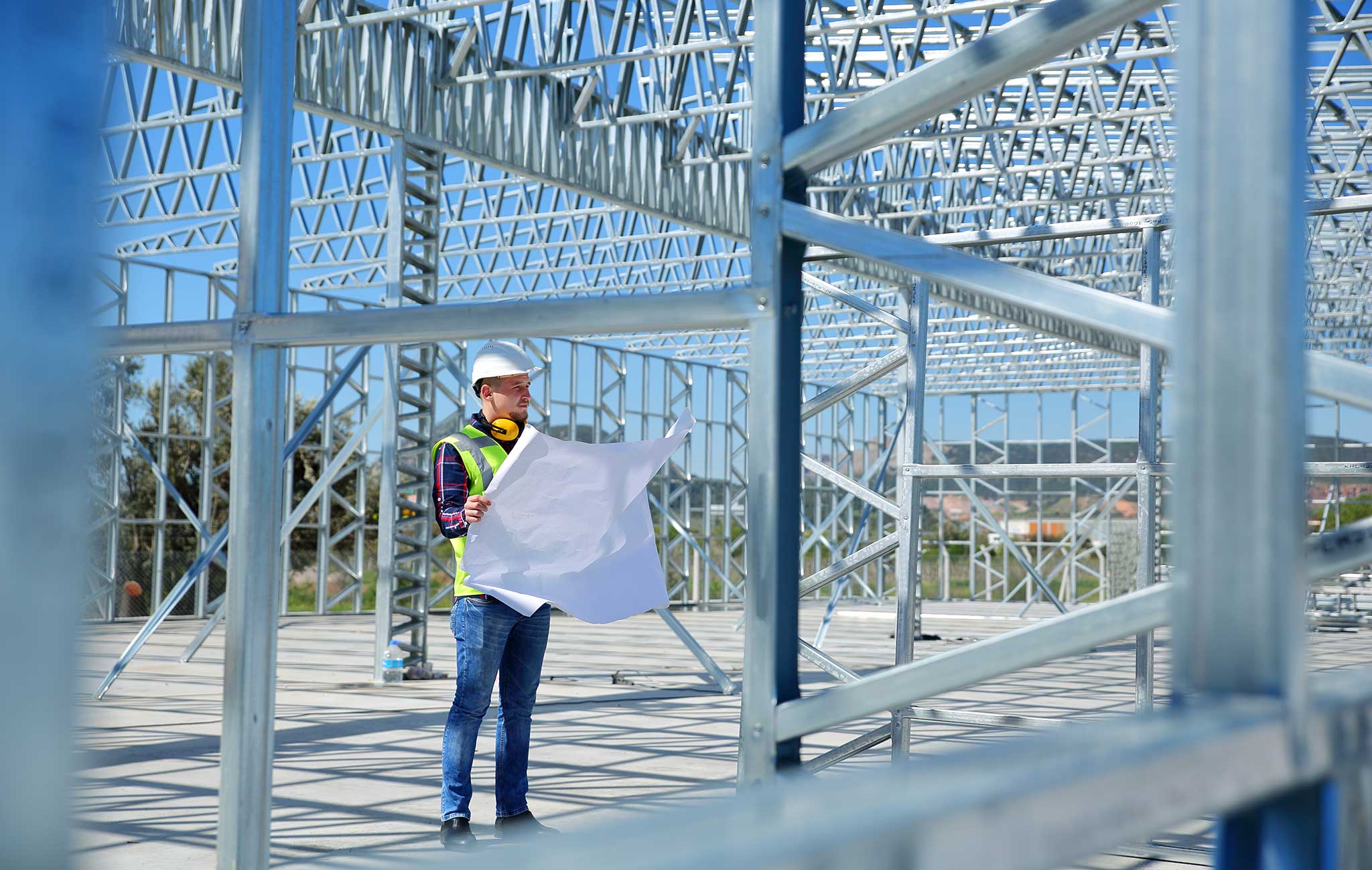

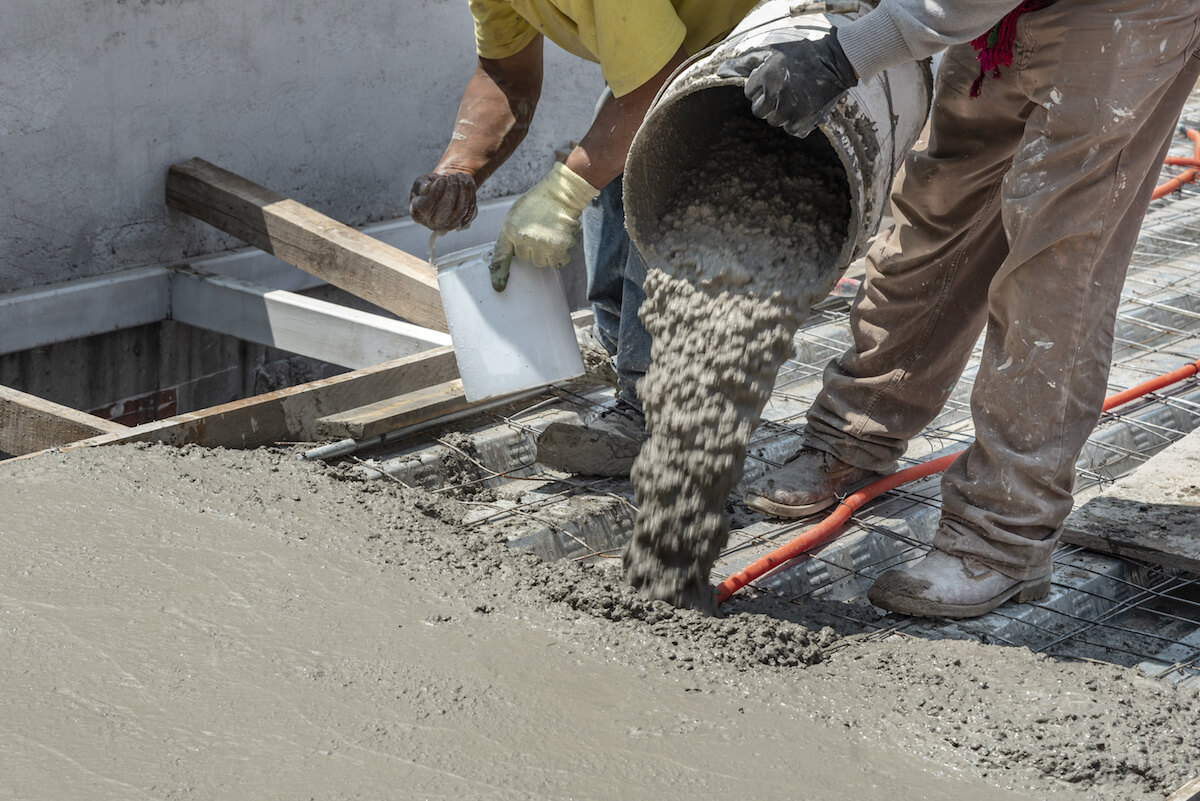


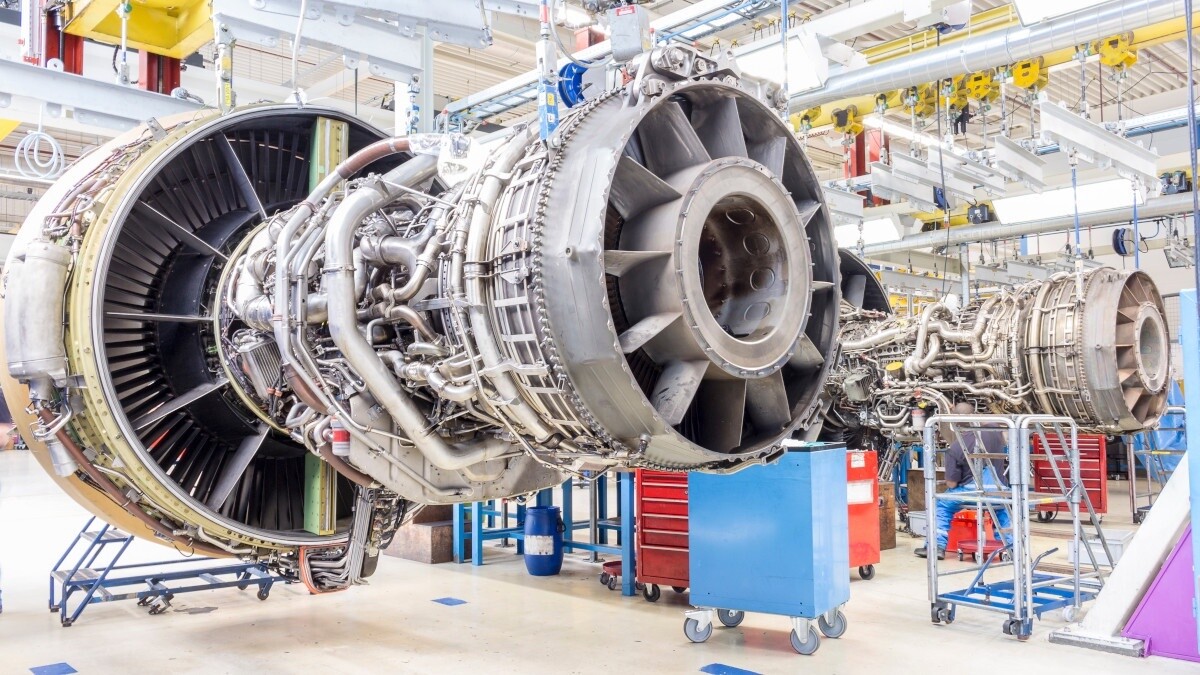





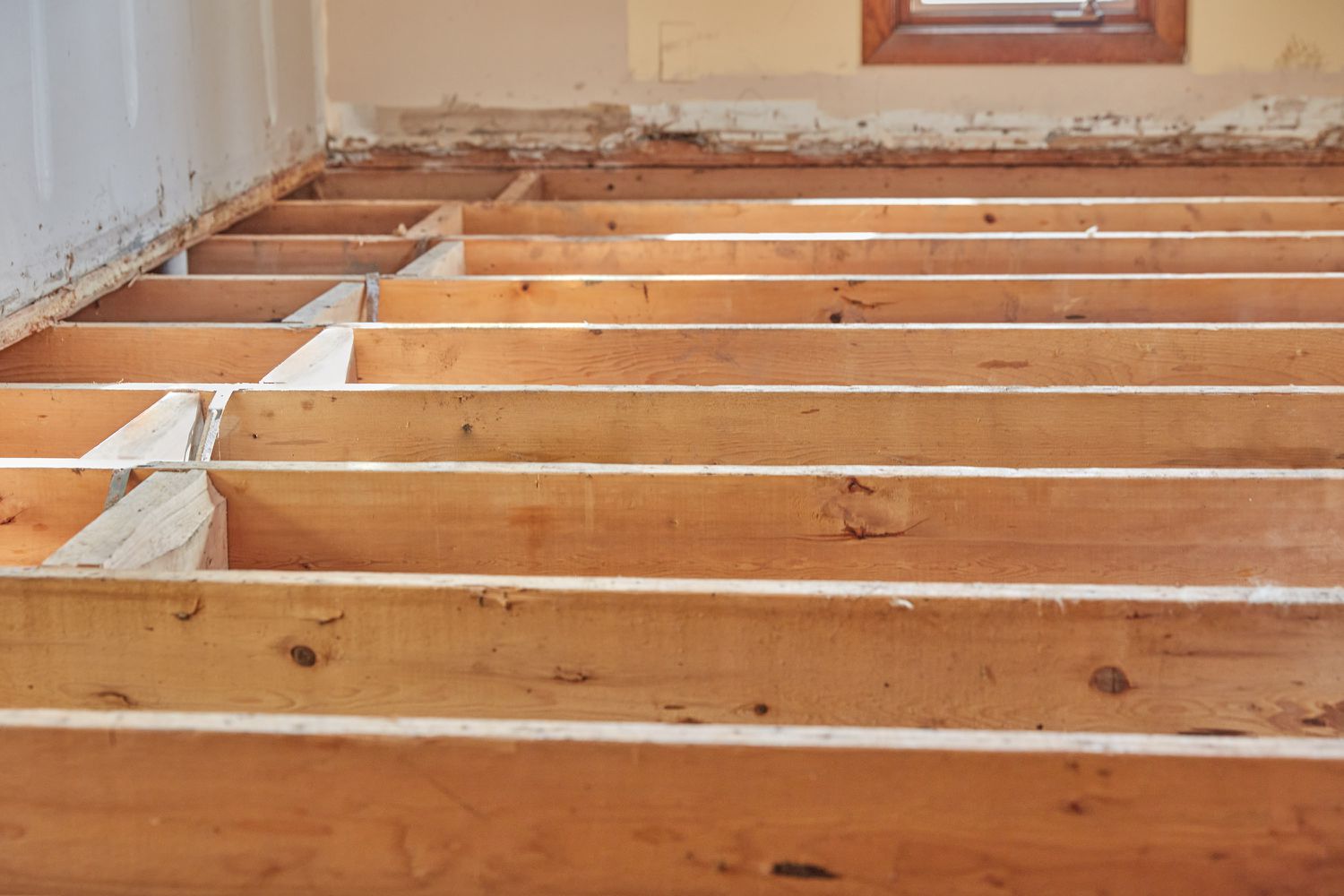

0 thoughts on “What Is A Structure In Construction”